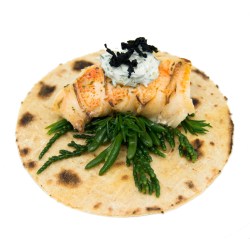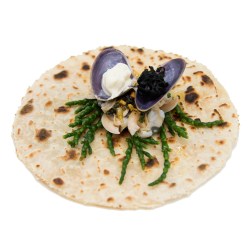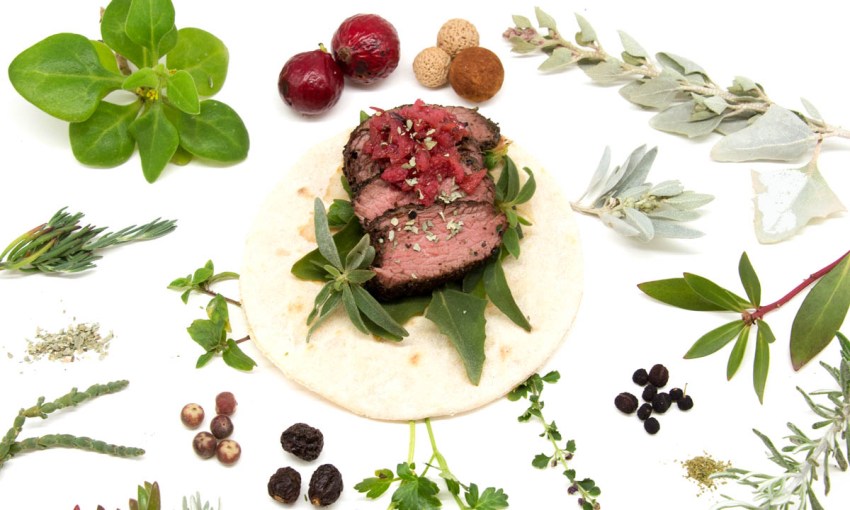Kaurna multidisciplinary artist James Tylor has released 'Mai: Kaurna Contemporary Food', a collection of 15 recipes that use Tartanya native produce and highlight many delicious corners of Country.
Decolonising food with James Tylor
“They say that bread was invented in Australia,” James Tylor tells CityMag, referencing a grindstone found in western New South Wales that dates back more than 30,000 years.
“They found plant material on it so they know it was specifically used for eating and grinding, and that’s the oldest in the world.”
‘Mai: Kaurna Contemporary Food’
Fifteen contemporary recipes featuring Kaurna Country flavours
Read online at James’ website for free.
The Canberra-based artist, who also has a passion for reviving language and infusing a penchant for plants into his practice, has worked on Mai: Kaurna Contemporary Food, a Kaurna recipe collection, since 2018.
While compiling recipes, James, who is of Kaurna heritage, selected a version of flatbread, called mara murdumurdu, to act as the work’s foundation. This was to pay homage to the ingenuity of Indigenous Australians thousands of years ago.

Mai kauwa (cliff food)
“It’s just part of that tradition,” James says.
“If I didn’t put something in that’s fundamentally an Indigenous invention, it’s a bit strange.”
Mara murdumurdu is a wholegrain flour version of a johnnycake flatbread and is a hand-sized vessel that can hold 15 diverse recipes – all of which are banded together in Mai: Kaurna Contemporary Food.
The fragrant fillings span pinches of Murray River salt to boiled bunches of karkalla, with the aim of each recipe being to speak to different geographical landscapes of Kaurna Country.
“There’s recipes about the coast, the beach, the surf, and the things you get from there, like the rivers and mountains,” James says. “It was about just trying to create awareness about those different ecosystems.”

James Tylor. This picture: Josh Geelen
James spent a week developing the recipes four years ago before touring the menu through different art galleries and institutions, such as the Queensland Art Gallery and Adelaide Contemporary Experimental on North Terrace. He also published snapshots of the recipes previously in Artlink.
After years of refining the formulas while working on other projects, James reached a point where he felt a broader collection could be published.
At the beginning of the month, Mai: Kaurna Contemporary Food went live. You can now read the recipes on James’ website.
“I was relieved,” he says of having published the works.
“I’ve been sitting with those recipes for a long time… and I worried about them not being ever used, and I was, like, ‘Oh, that’s a shame’. I did so much hard work and they were quite beautiful. So I decided to do it.”

Mai wauwa (beach food)
Throughout James’ ongoing research into food, he noticed how damaged Adelaide’s surrounding landscape is, “partly because of people doing Western farming on Kaurna lands,” he says. This and the culinary void of contemporary Kaurna recipes served as inspirational springboard.
“There’s nothing uniquely in Adelaide that’s Kaurna that you would call Kaurna food,” James says. “I thought, ‘Oh, wouldn’t it be an interesting project to design some food?’”
While growing up in Medindie, James foraged native ingredients. But he does not recommend people forage for ingredients for his recipes.
A safer option is to “go to Something Wild,” he says.
See Mai: Kaurna Contemporary Food in full on James’ website.




